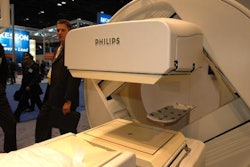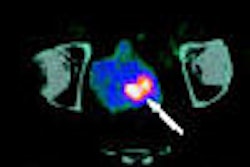Patients with mesial temporal lobe epilepsy (MTLE) who have an abnormal odor perception may have widespread limbic dysfunction, according to a presentation by Swedish investigators at the North American Regional Epilepsy Congress in San Diego earlier this month.
The dysfunction can either be a failure to recognize familiar odors or a lack of the typical activation of the limbic system as documented by PET studies.
"Imaging of olfaction in MTLE may be used to determine specific activation-related changes in limbic processing and show the extent of interictal limbic dysfunction," said principal investigator Dr. Carolina Ciumas, a researcher in clinical neuroscience at the Karolinska Institute in Stockholm. Such imaging studies may help locate the side of the brain that is the locus for seizure onset, she added.
Ciumas' team conducted the study because of the known relationship between odor perception and the limbic system. They performed several activation studies with 15-O-H2O-PET during the passive smelling of odors, using the smell of odorless air as the baseline condition.
The study population consisted of 13 patients with left-sided MTLE, 10 with right-sided MTLE, and 21 controls. They used FDG-PET exams to identify epileptogenic regions, as well MRI and ictal EEG recordings. They tested significant activations in each group and differences between the groups with random effect analyses. They also evaluated whether the functional connectivity of the piriform and insular cortex differed between patients and controls; they used the whole brain as the search space.
The investigators defined functional connectivity as a significant co-variation between different regions, and they assessed functional connectivity during both the baseline condition and odor activation. The investigators used both familiar and unfamiliar odors.
When the controls perceived odors, the bilateral amygdala, piriform, and anterior insular and cingulate cortices were activated. The investigators also detected activation in Broca's area when the controls smelled familiar odors.
In contrast, patients showed no activation of the amygdala, piriform, and anterior insular cortex on the side of the brain opposite of the epileptogenic side. Additionally, patients with left-sided disease did not activate Broca's area when smelling familiar odors, and perceived familiar odors as less familiar than the controls and patients with right-sided disease.
While the investigators documented functional connectivity during odor activation in healthy controls between the two piriform cortices, and between the right piriform and orbitofrontal cortex, they documented no such connectivity in patients.
By Paula Moyer
AuntMinnie.com staff writer
December 19, 2006
Related Reading
Pilot study shows stereotactic radiosurgery safely treats epileptic seizures, December 6, 2006
Drawing-induced epilepsy points to frontoparietal lobe involvement, March 24, 2006
Lesbians' neuro response to pheromones unlike straight women's -- and men's, March 30, 2006
Copyright © 2006 AuntMinnie.com




















